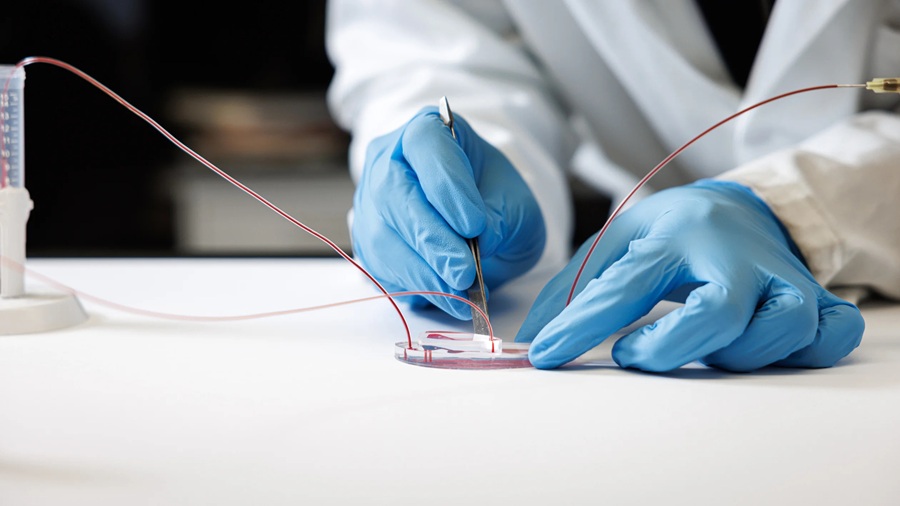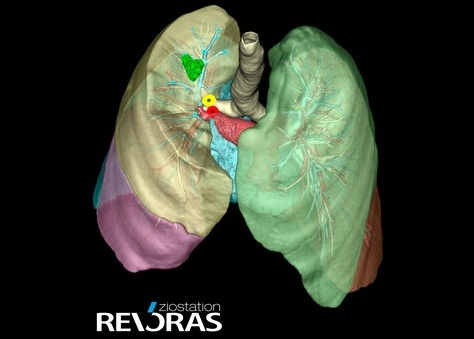New Microfluidic Device Improves Safety of Leukemia Treatment for Children
|
By HospiMedica International staff writers Posted on 20 Mar 2025 |

Leukemia is the most common cancer type in children, with approximately 5 cases per 100,000 children diagnosed annually in the United States. Between 20% and 30% of children with acute leukemia develop hyperleukocytosis, a condition characterized by an abnormally high white blood cell count, which can lead to life-threatening complications. While chemotherapy remains the primary treatment for acute leukemia, leukapheresis—an urgent procedure to reduce dangerously high white blood cell levels—can be a crucial, life-saving option. During leukapheresis, a machine uses centrifugation to separate white blood cells (leukocytes) from the rest of the blood, which is then returned to the patient. However, conventional blood-filtering machines pose risks to children due to issues such as high extracorporeal volume (ECV), high flow rates, and potential platelet loss. Now, new devices under development could improve the safety of this life-saving treatment for children with hyperleukocytosis.
A pioneering study led by researchers at the University of Houston (Houston, TX, USA), in collaboration with Baylor College of Medicine (Houston, TX, USA), examined whether a high-throughput microfluidic device could overcome the limitations of traditional blood-filtering machines in the treatment of children with hyperleukocytosis. This new microfluidic device features a series of tiny channels, roughly the width of a human hair, designed to separate blood cells efficiently by size through a process known as controlled incremental filtration.
During in vitro tests, the microfluidic devices successfully removed approximately 85% of large leukocytes and around 90% of leukemic blasts (abnormally proliferating cancerous white blood cells) from undiluted human whole blood. Leukemic blasts are immature white blood cells that do not develop correctly, proliferating too rapidly and crowding out normal blood cells. When tested in vivo, the device demonstrated similar efficiency in leukocyte collection without causing platelet loss or any adverse effects, while successfully recirculating undiluted whole blood for over three hours—approximately the typical duration of a leukapheresis procedure. These promising results, published in Nature Communications, highlight the potential of this microfluidic device to make leukapheresis safer and more effective for pediatric patients.
“Continuously and efficiently separating leukocytes from recirculating undiluted whole blood - without device clogging and cell activation or damage - has long been a major challenge in microfluidic cell separation. Our study is the first to solve this problem,” said Sergey Shevkoplyas, a professor of biomedical engineering at University of Houston. “Overall, our study suggests that microfluidics leukapheresis is safe and effective at selectively removing leukocytes from circulation, with separation performance sufficiently high to ultimately enable safe leukapheresis in children.”
Latest Critical Care News
- Digital Heart Twin Improves Diagnosis and Treatment of Cardiac Arrhythmias
- First-Of-Its-Kind AI-Powered Probability Scoring System Assesses Heart Failure with Preserved Ejection Fraction
- AI-Assisted Colonoscopy Detects More Polyps but Has Modest Effect on Cancer Risk
- Wearables Could Reduce Need for Continuous Blood Thinners in Patients with Atrial Fibrillation
- AI Model Provides Real-Time Sepsis Risk Alerts for Improving ICU Patient Survival
- AI Algorithm Improves Intravenous Nutrition for Premature Babies
- Smart Mirror Generates AI-Powered Health Insights by Analyzing Facial Blood Flow
- Painless Diabetes Patch to Replace Needle Pricks

- Sensory T-Shirt Monitors Patient’s Vitals After Urological Surgery for Cancer
- Super-Sensitive Radar Technology Warns of Serious Heart Issues
- Thermal Imaging Could Accurately Track Vital Signs for Early Disease Detection
- Precision Transfusion Approach Improves Outcomes in TBI Patients
- Predictive Model for Daily Risk Alerts in Sepsis Patients Enables Early Intervention
- Novel Technology Measures Intracranial Pressure More Accurately and Non-Invasively
- Novel Coating Significantly Extends Longevity of Implantable Biosensors
- Nanogel-Based Drug Delivery Technology to Improve UTI Treatment
Channels
Artificial Intelligence
view channel
Innovative Risk Score Predicts Heart Attack or Stroke in Kidney Transplant Candidates
Heart researchers have utilized an innovative risk assessment score to accurately predict whether patients being evaluated for kidney transplants are at risk for future major cardiac events, such as a... Read more
AI Algorithm Detects Early-Stage Metabolic-Associated Steatotic Liver Disease Using EHRs
Liver disease, which is treatable when detected early, often goes unnoticed until it reaches advanced stages. Metabolic-associated steatotic liver disease (MASLD), the most prevalent form of liver disease,... Read moreSurgical Techniques
view channel
Minimally Invasive Valve Repair Reduces Hospitalizations in Severe Tricuspid Regurgitation Patients
The tricuspid valve is one of the four heart valves, responsible for regulating blood flow from the right atrium (the heart's upper-right chamber) to the right ventricle (the lower-right chamber).... Read more
Tiny Robotic Tools Powered by Magnetic Fields to Enable Minimally Invasive Brain Surgery
Over the past few decades, there has been a significant surge in the development of robotic tools designed to facilitate minimally invasive surgeries, improving recovery times and patient outcomes.... Read morePatient Care
view channel
Portable Biosensor Platform to Reduce Hospital-Acquired Infections
Approximately 4 million patients in the European Union acquire healthcare-associated infections (HAIs) or nosocomial infections each year, with around 37,000 deaths directly resulting from these infections,... Read moreFirst-Of-Its-Kind Portable Germicidal Light Technology Disinfects High-Touch Clinical Surfaces in Seconds
Reducing healthcare-acquired infections (HAIs) remains a pressing issue within global healthcare systems. In the United States alone, 1.7 million patients contract HAIs annually, leading to approximately... Read more
Surgical Capacity Optimization Solution Helps Hospitals Boost OR Utilization
An innovative solution has the capability to transform surgical capacity utilization by targeting the root cause of surgical block time inefficiencies. Fujitsu Limited’s (Tokyo, Japan) Surgical Capacity... Read more
Game-Changing Innovation in Surgical Instrument Sterilization Significantly Improves OR Throughput
A groundbreaking innovation enables hospitals to significantly improve instrument processing time and throughput in operating rooms (ORs) and sterile processing departments. Turbett Surgical, Inc.... Read moreHealth IT
view channel
Printable Molecule-Selective Nanoparticles Enable Mass Production of Wearable Biosensors
The future of medicine is likely to focus on the personalization of healthcare—understanding exactly what an individual requires and delivering the appropriate combination of nutrients, metabolites, and... Read more
Smartwatches Could Detect Congestive Heart Failure
Diagnosing congestive heart failure (CHF) typically requires expensive and time-consuming imaging techniques like echocardiography, also known as cardiac ultrasound. Previously, detecting CHF by analyzing... Read morePoint of Care
view channel
Handheld, Sound-Based Diagnostic System Delivers Bedside Blood Test Results in An Hour
Patients who go to a doctor for a blood test often have to contend with a needle and syringe, followed by a long wait—sometimes hours or even days—for lab results. Scientists have been working hard to... Read more
Smartphone-Enabled, Paper-Based Quantitative Diagnostic Platform Transforms POC Testing
Point-of-care diagnostics are crucial for public health, offering rapid, on-site testing that enables prompt diagnosis and treatment. This is especially valuable in remote or underserved regions where... Read moreBusiness
view channel
Expanded Collaboration to Transform OR Technology Through AI and Automation
The expansion of an existing collaboration between three leading companies aims to develop artificial intelligence (AI)-driven solutions for smart operating rooms with sophisticated monitoring and automation.... Read more

















